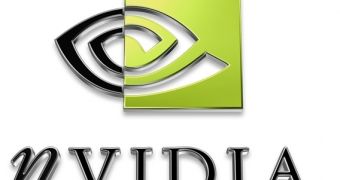Graphics expert Nvidia has announced its first processor targeted at cellphone applications. The chip will power the cellphones' displays and will be able to handle resolutions up to 720 pixels, extremely close to what nowadays' sub-notebooks are currently capable of.
The processor is built using the older, 65-nanometer production node and comes with a 750 MHz ARM 11 with 256 KB of L2 cache, energy-efficient graphics processing with built-in video cores. The image processor can support up to 12 megapixel of images and dissipates a total power of 200 milliwatts of power while decoding a 720p video stream.
The announcement might be regarded as a war statement Nvidia is sending to Toshiba, as it described a 65nm chip that decodes 720p video at 209 mW for 30 frames/second and 620mW at 60 frames/s. The processor was detailed upon at the International Solid State Circuits Conference and features 8 cores with 512 KB of L2 cache, with a stock core clock of 333 MHz. Another competitor in the mobile world is Texas Instruments, that came with a 45-nanometer chip with an 840 MHz ARM 11 core that. The TI processor can handle H.264 video but sucks up to 500 milliwatts of power.
The APX 2500 chip will enter mass production somewhere in June, but it will be demonstrated at this week's GSM World Congress in Barcelona. The graphics core the chip is based on can deliver the same performance as the GeForce 6 desktop graphics processors, and will be accompanied by a basic framework for user interface software that unlocks advanced features such as transparency, overlays and anti-aliasing.
"Until recently the cellphone architecture was all about the phone, but now the cellphone is turning into a computer with designs like the Apple iPhone," said Mike Rayfield, general manager of NVidia's mobile group.
Nvidia has taken an important step into the mobile business, but it will take some more time until it gains its popularity. According to Rayfield, this is a small part in a long roadmap, that includes mobile phones and GPS navigation devices.

 14 DAY TRIAL //
14 DAY TRIAL //